
How Timothy Egan Time Travels
October 31, 2016
“I’m sort of an accidental historian. . . I’m a storyteller first and foremost,” said Timothy Egan of how he creates his vivid portraits of little-known historical figures. “There’s no such thing as boring history—only boringly told history.” On October 26, for his 2016 Literary Arts lecture, Egan walked us through the go-to sources that have lent texture to his accounts and, to himself personally, the ability to seek refuge in the past.
From Ireland to the American West, from the rebel Thomas Francis Meager to the founder of the U.S. Forest Service Gifford Pinchot, these letters, diaries, and oral histories brought us in close to these figures: to their family homes, their prison cells, their ship voyages—to the emotional intensity of memory that’s been lived and directly recorded.
Here are five glimpses at some of the surprising stories Egan told the crowd:
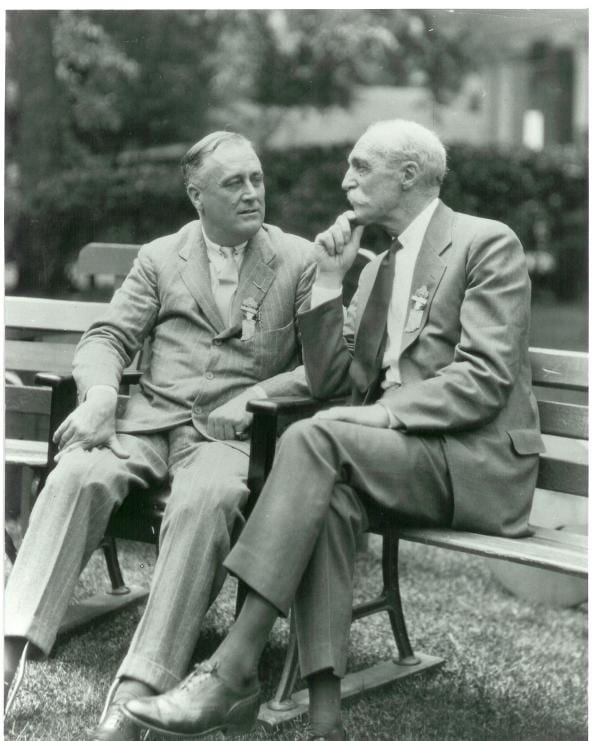
Gifford Pinchot, left, with President Franklin Roosevelt, circa 1935.
On Gifford Pinchot’s ghost: “[Gifford] Pinchot was the chief aide to Teddy Roosevelt, and he lived with a ghost. The woman he was madly in love with died, and so Pinchot saw her in apparition form. The great secret of Pinchot’s life was that he would write in his diary, Not a clear day. That meant he didn’t see his lover. He would write in his diary, Had a great dinner with Teddy at the White House tonight, and so-and-so, his lover’s name, enjoyed it as well. He would set a seat for her—this is the founder of the Forest Service!”
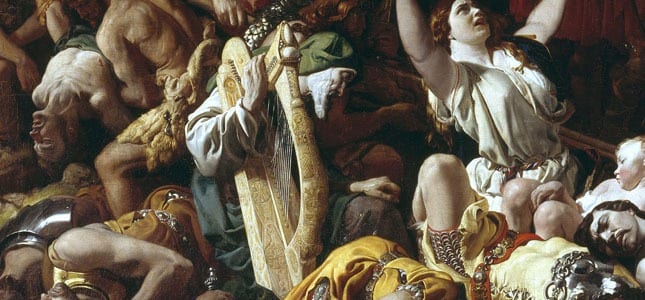
Harpist detail from “The Marriage of Strongbow and Aoife,” Daniel Maclise, 1854.
On the Irish harp: “Through almost 800 years of British occupation, it was at one point or another a crime to speak your language, a crime to practice your religion, a crime to own property, a crime to be educated, a crime to play the harp. Which is why the harp is on every bottle of Guinness, and it’s the national symbol of Ireland. When the Irish brigade stormed into the Civil War, what did they have on their flag? The harp. Queen Elizabeth, in the 1500s, famously said, ‘Find the harpists, wherever they are, and hang them.’ Most of them were blind because that was the profession of the blind at the time.”
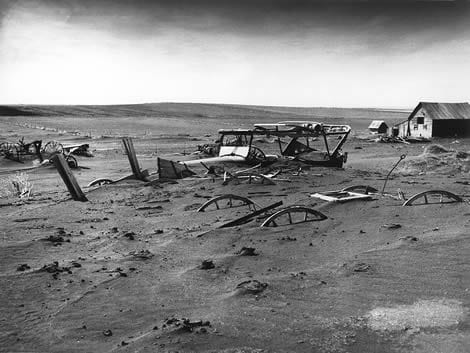
Dust storm aftermath, South Dakota, 1936.
On the climate change story of the Dustbowl: “When I was doing the research [on the Dustbowl], I found this half-Apache, half-Anglo horse wrangler in his 80s in the Texas Panhandle, living not far from Amarillo. He told me his daddy had told him a story of the dustbowl—they were looking out one of these days into this sepia-toned wasteland, everything destroyed, not a bit of green, winds blowing, and he said his dad turned to him and said, ‘Wrong side up.’ Wrong side up—turning the grass over, letting it blow. In those simple words, that’s the story of the Dustbowl . . . They destroyed the grassland.”
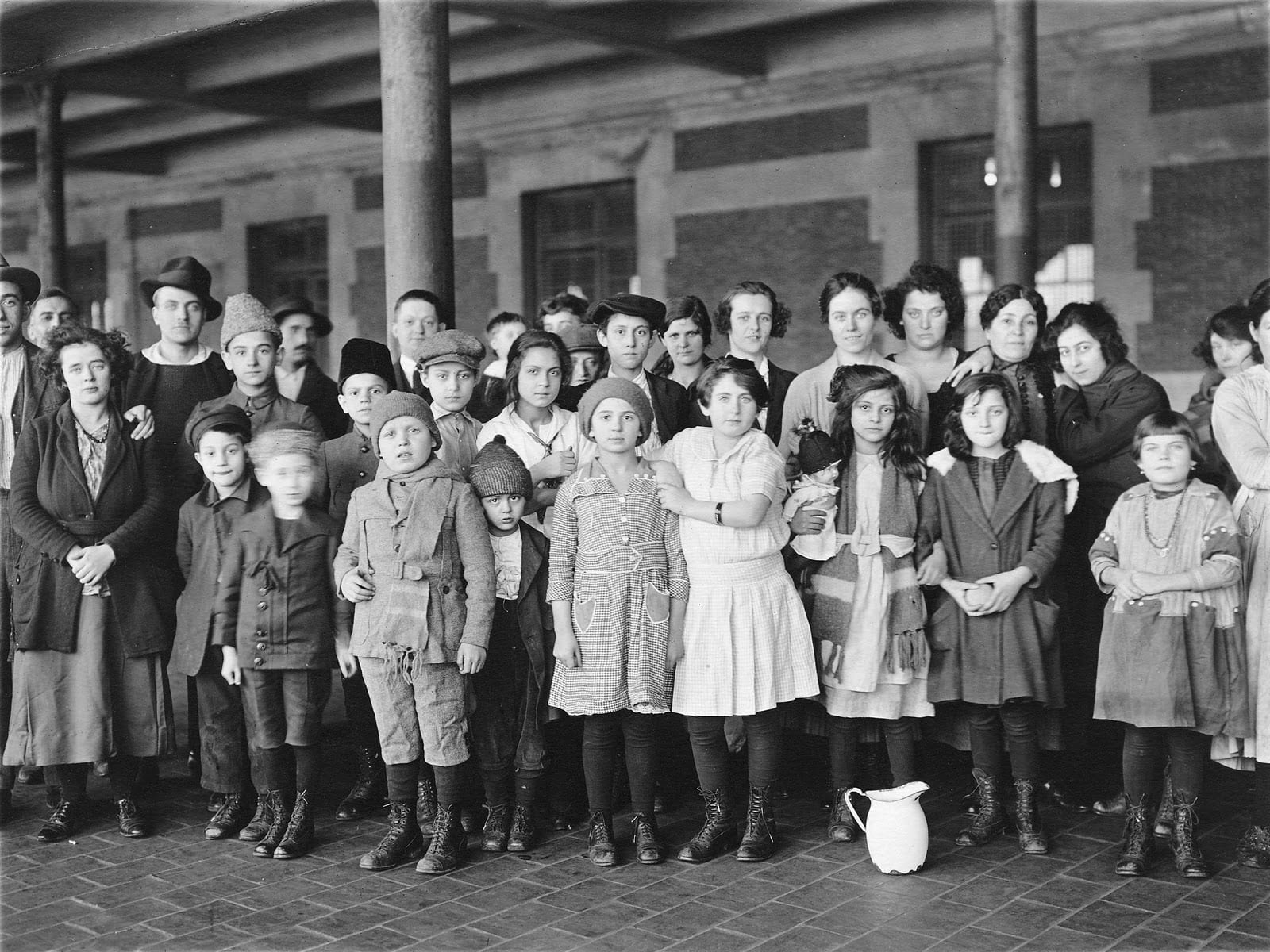
Immigrant children at Ellis Island, 1908.
On famous families that left Ireland during the famine: “Among those who left Ireland during the famine were the Kennedy family from County Wexford, and you know the story there—they eventually produced John F. Kennedy, the first Irish Catholic president. But you probably don’t know that Lennon family left County Down for Liverpool, the biggest place for the Irish diaspora, and they eventually produced John Lennon of the Beatles. And you probably don’t know that the Kearney family left County Ofally to produce another American president, Barack Obama.”
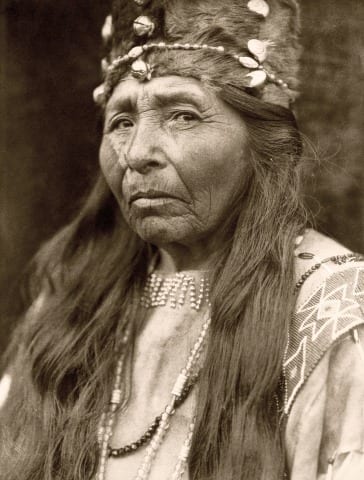
“Klamath Woman” by Edward Curtis, 1924.
On how Edward Curtis became a photographer: “[Curtis’] goal in life was to be a logger. Maybe, he thought, if he was really lucky, he could be a brick mason. On his twenty-first year, he falls from a log and badly mangles his back. He spends almost a year on his back, trying to get well. And during his recovery, he starts to notice the world around him. He starts to notice, as he said, that you could see the entire prism of the rainbow in a raindrop sitting on a rhododendron leaf. He noticed that the light changed not just in the morning and at night, but at all parts of the day. And then, he started to see the world through a lens, after seeing it that way on his back.”